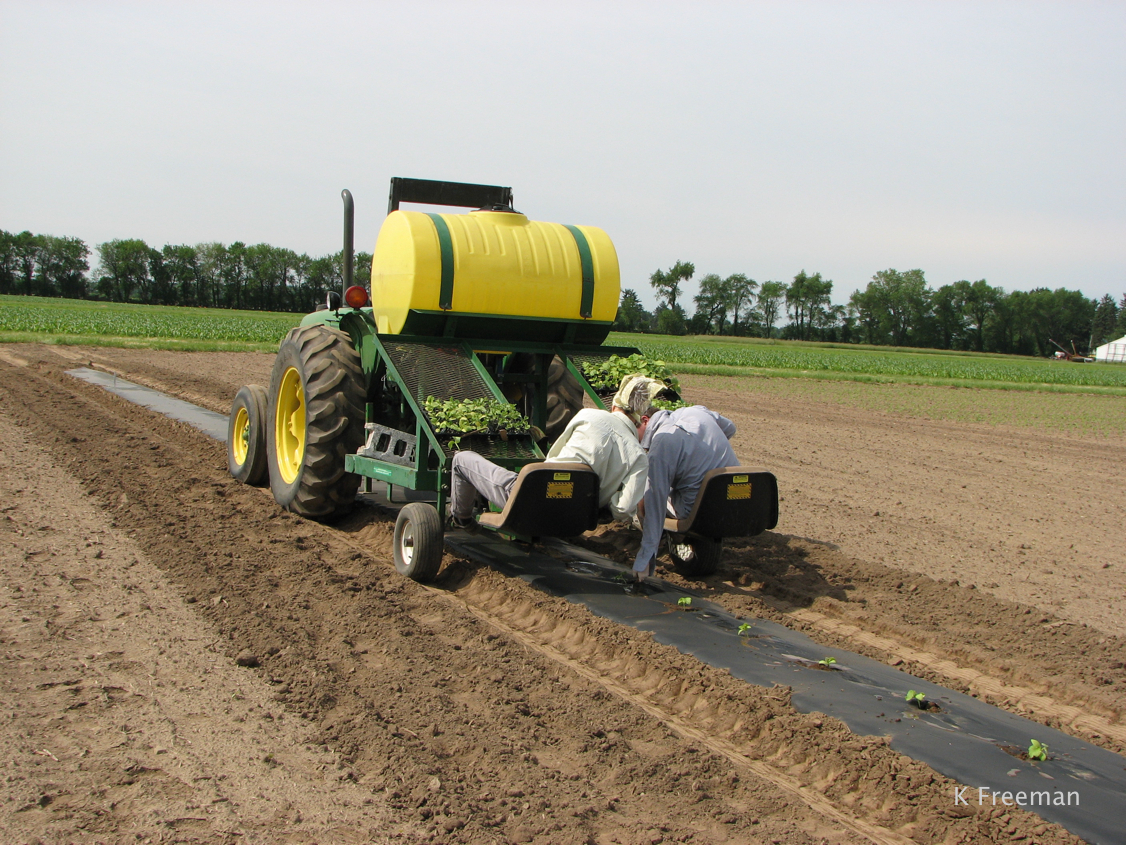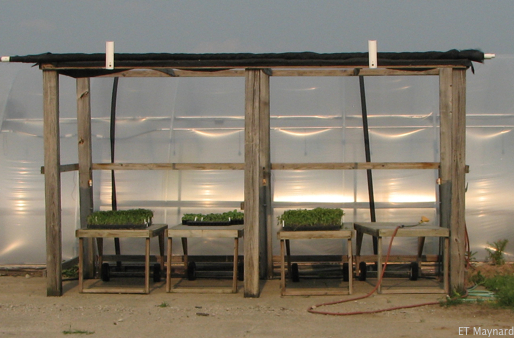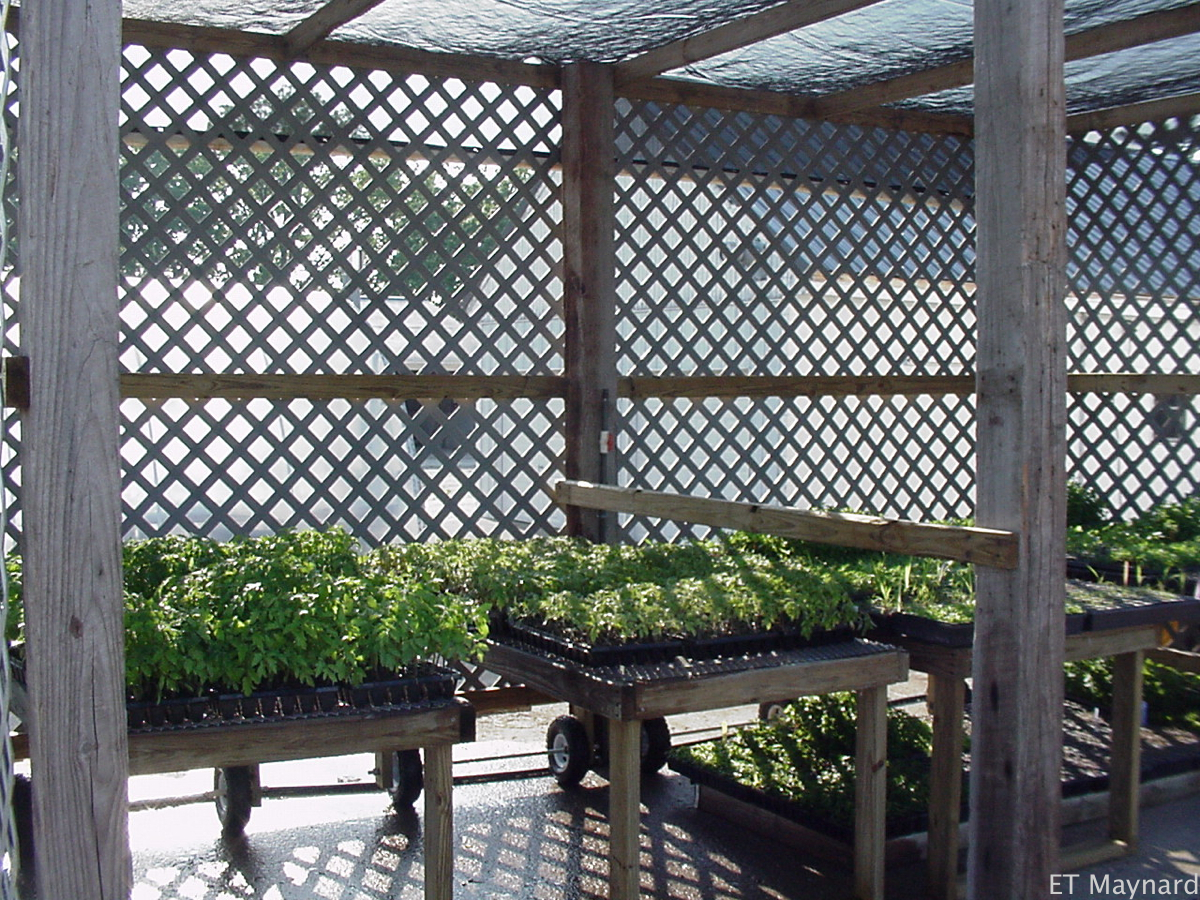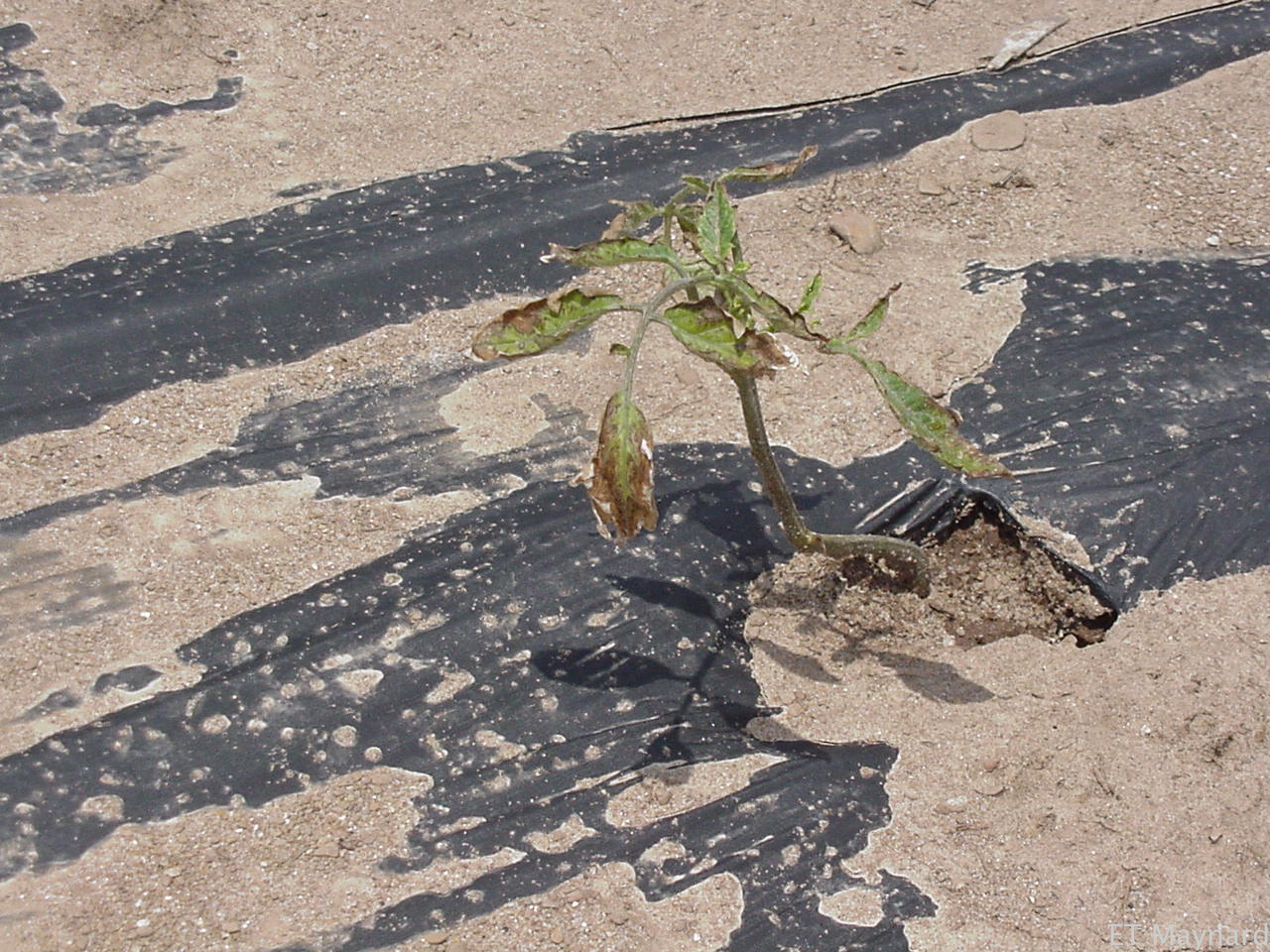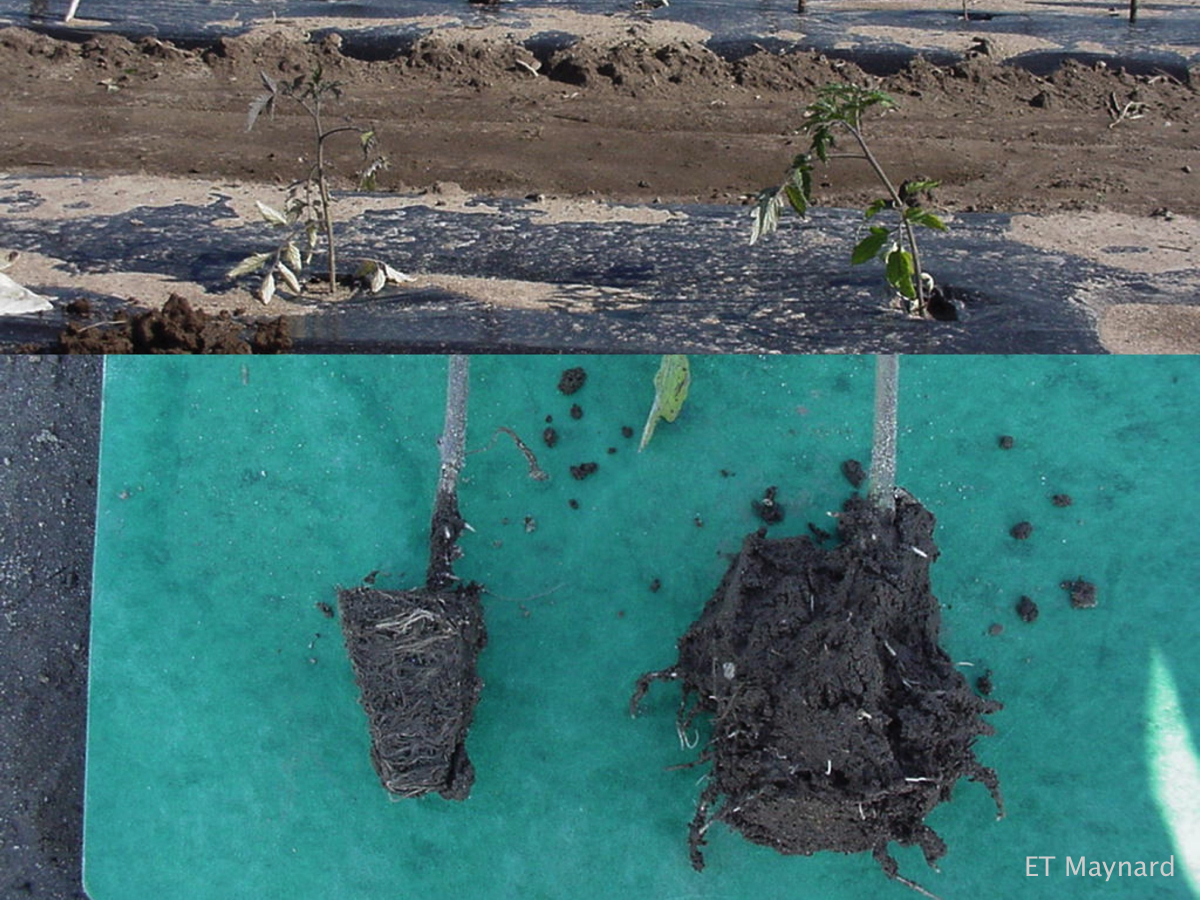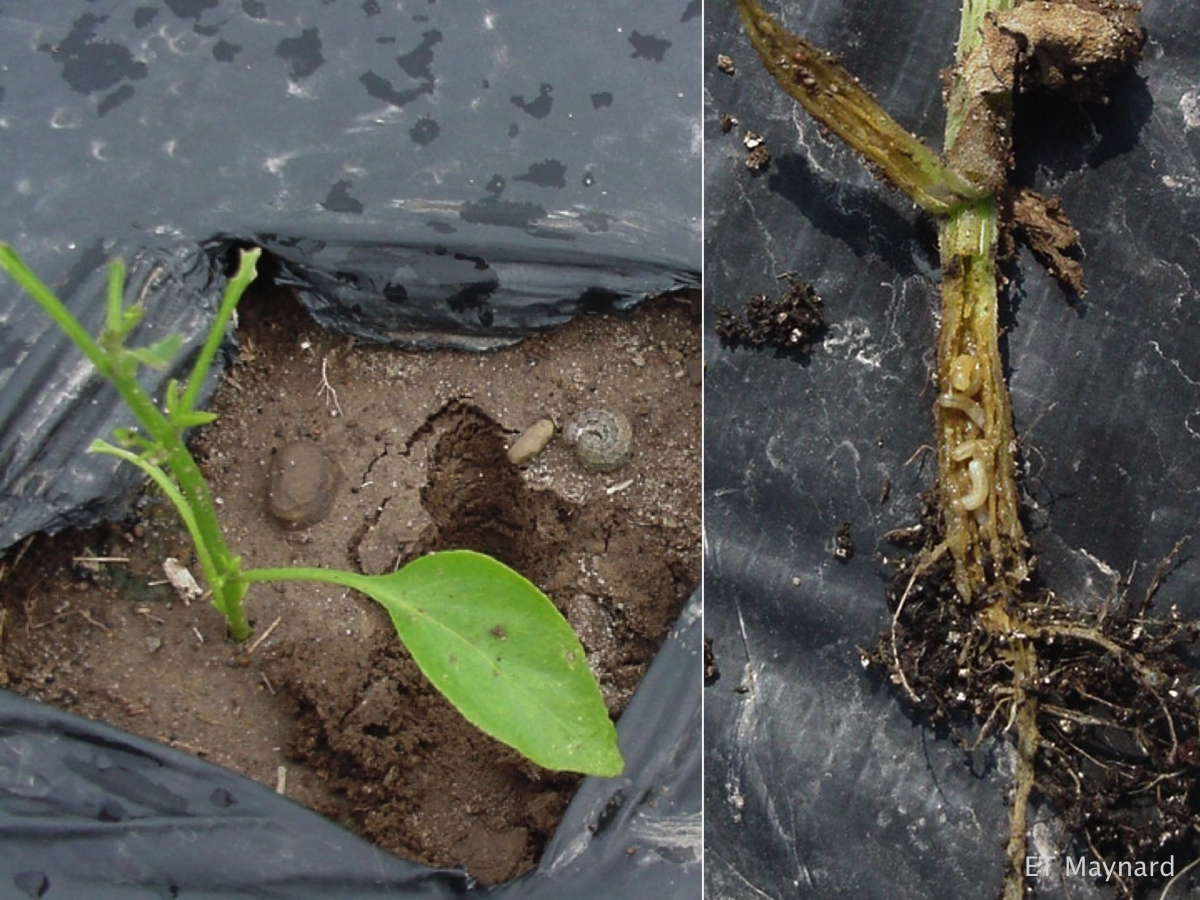Getting seedlings from the transplant tray into the field is essential for a good crop (Figure 1). Healthy transplants treated well will quickly establish themselves in the field, setting the foundation for a productive crop. Here I offer some suggestions for successful transplant establishment.
Harden transplants by exposing them to higher light, cooler temperature, and slightly drier conditions than during transplant production (Figures 2 and 3). One goal of hardening is to slow growth of the seedlings and increase their stored energy. A second aim is to acclimate the plants to the field environment. A properly hardened plant will recover from the stresses of transplanting more quickly and begin to grow sooner than a plant that has not been hardened. Seedlings are commonly hardened by putting them outside in a partially shaded and protected location, often on a wagon so they can be moved indoors if low temperatures or high winds threaten, and moved to full sun after a few days.
Water seedlings well before taking them to the field, and be prepared to water them in the field if they dry out before transplanting
Make sure there is moisture under plastic mulch if it is used. Apply plastic mulch over soil that is moist. If mulch is applied over dry soil, it is difficult to fully wet the future root zone of the crop. If soil is dry, run drip irrigation before transplanting.
If plastic mulch is used, apply so it fits tightly over a firm and level bed. According to M. Orzolek, vegetable specialist retired from Penn State, this will reduce problems of hot air collecting under the plastic and coming out through the transplant hole where it can injure stems. A tight fit will also reduce the chance of wind lifting up the plastic and covering seedlings.
Set transplanting equipment to proper depth. Seedlings should be planted at least a little deeper than the root ball, and some species benefit from even deeper planting. For instance, research in Florida showed that tomatoes transplanted to the first true leaf produced more early yield and larger fruit in four of seven trials than when transplanted just deep enough to cover to the root ball (Figure 4).
Assure good coverage of the root ball. If a portion of the seedling root ball remains uncovered, it will dry out quickly and wick moisture away from the roots.
Protect seedlings from hot plastic mulch. Black plastic mulch can get hot enough to damage tender seedling stems or leaves. Make adjustments so that plants are not lying on mulch and stems are not rubbing against edge of the hole in the plastic (Figure 5).
Apply water to seedlings after transplanting, and consider including starter fertilizer. Water applied at transplanting helps to settle soil around the root ball and provides roots readily-available water. A starter fertilizer in the transplant solution assures nutrients are available in the root zone of the young plant; this is more important if soil is cool. If using a starter fertilizer, take care to mix it at the rate recommended for transplants and make sure the fertilizer is completely dissolved and well mixed in the tank. High concentrations of fertilizer can injure and kill transplants (Figure 6).
Protect transplants from wind. Wind can desiccate small seedlings as well as cause physical injury. Strips of cover crops left standing are commonly used as windbreaks in some areas. Temporary fencing can also work as a windbreak. It is also possible to seed strips of a fast growing crop such as oats and kill it with a grass herbicide once the wind protection is no longer needed.
Check transplants in a few days. Depending on conditions it may take a little while for them to root in and start growing. If establishment is uneven or seems to be too slow, try to determine what the problem is so it can be remedied soon, if possible, and avoided in the future. For example, in Figure 7, the tomato on the left in the top image appears more wilted and with smaller leaves that are not as green as the tomato on the right, suggesting that it has not established well. In the bottom image, root balls of tomatoes similar to those in the top photo are shown. On the right, new white root tips are visible coming out of the root ball, and new root growth is holding soil together. In contrast, the root ball on the left has no new roots; the only visible new root growth is coming from the stem above the root ball. Close examination reveals that the stem of that plant appears constricted just above and below those roots. It is possible that this is the result of a disease like Rhizoctonia, and that could be the reason for poor establishment. To confirm that suspicion, a sample of plants could be sent to the Purdue Plant and Pest Diagnostic Lab. In addition to diseases, physical, and physiological problems, be on the lookout for insect problems like maggots or cutworms that have been mentioned in previous issues of this newsletter (Figure 8).
If applicable, let pesticide applicators in the area know the crop has been transplanted so they can take necessary precautions.
Reference: Vavrina, C.S. et al. 1996. Transplant Depth Influences Tomato Yield and Maturity. HortScience 31(2):190-192.
